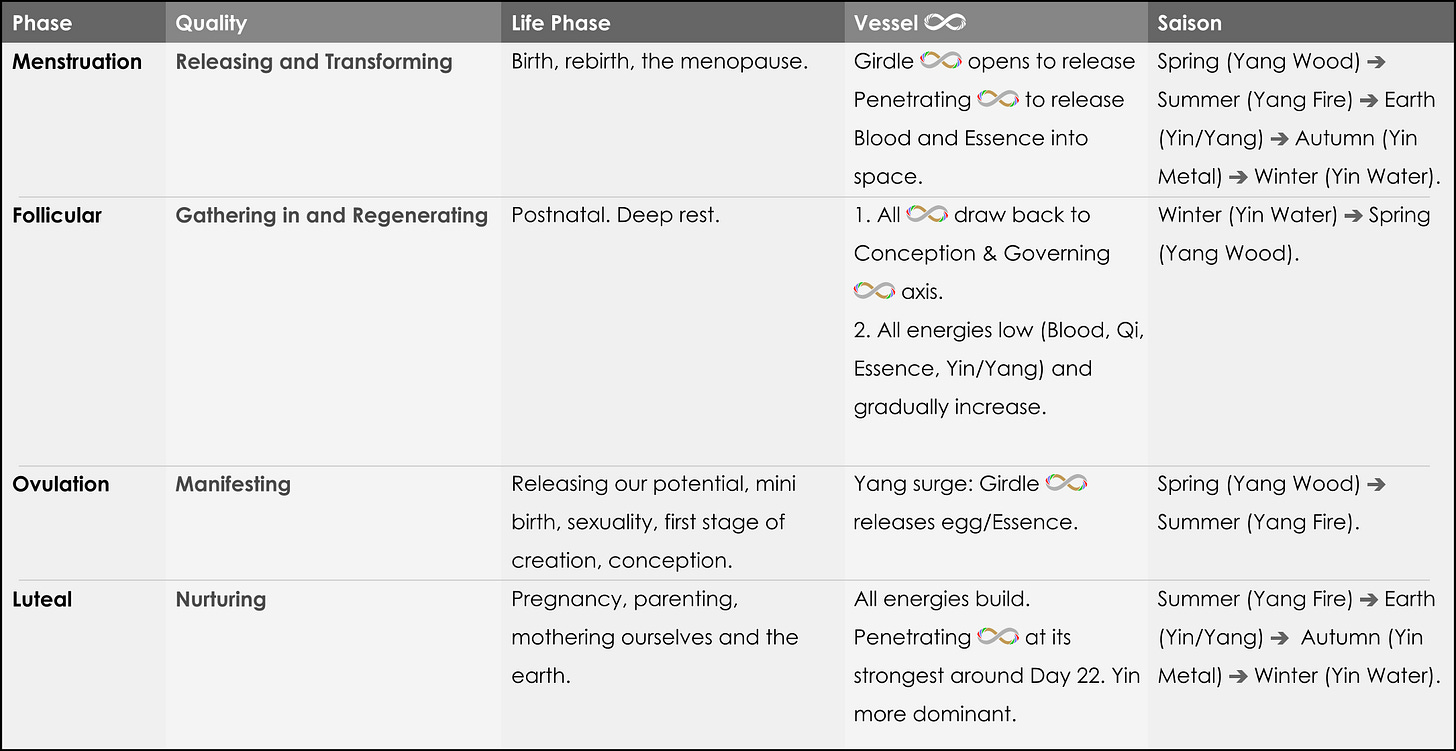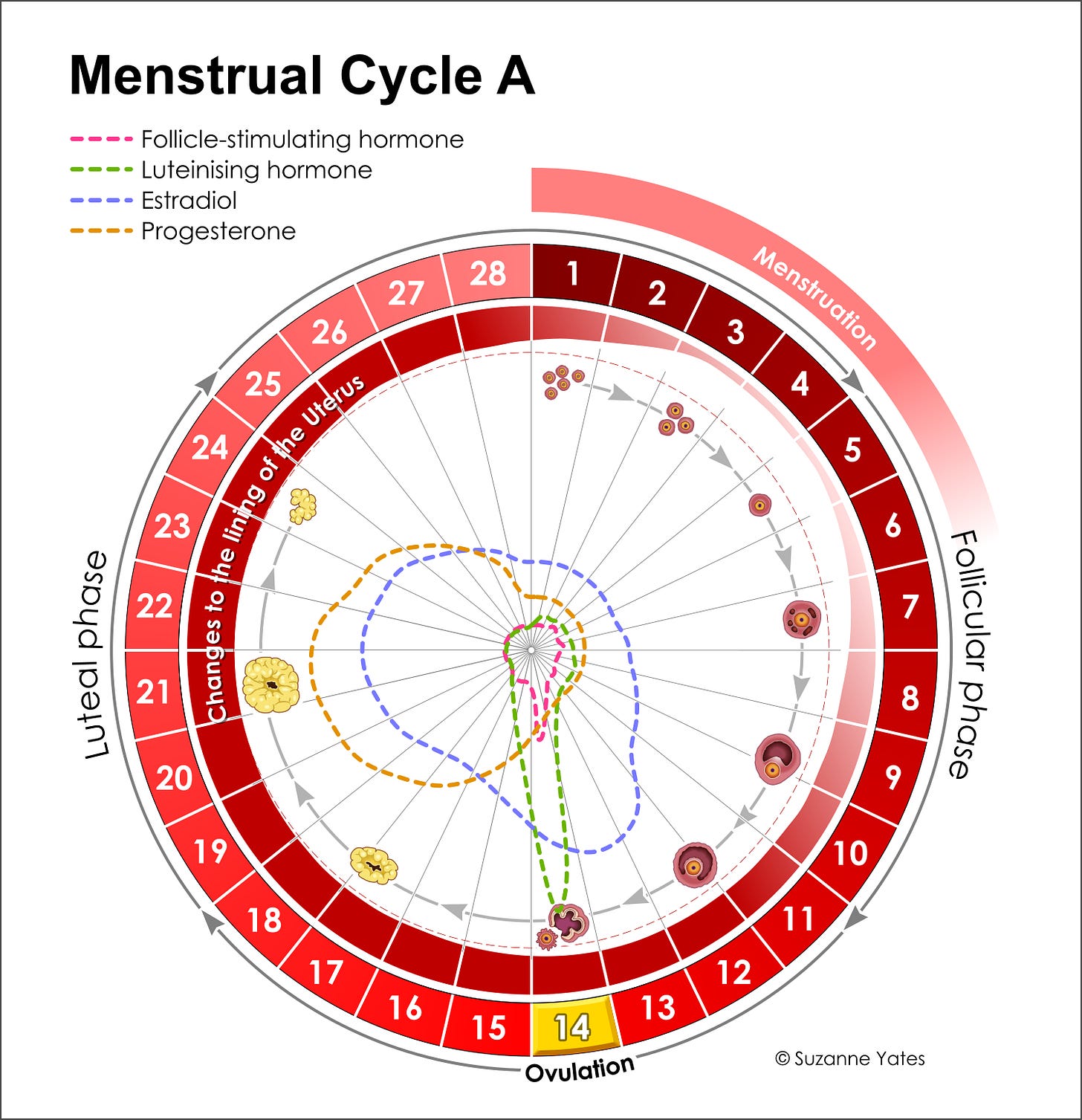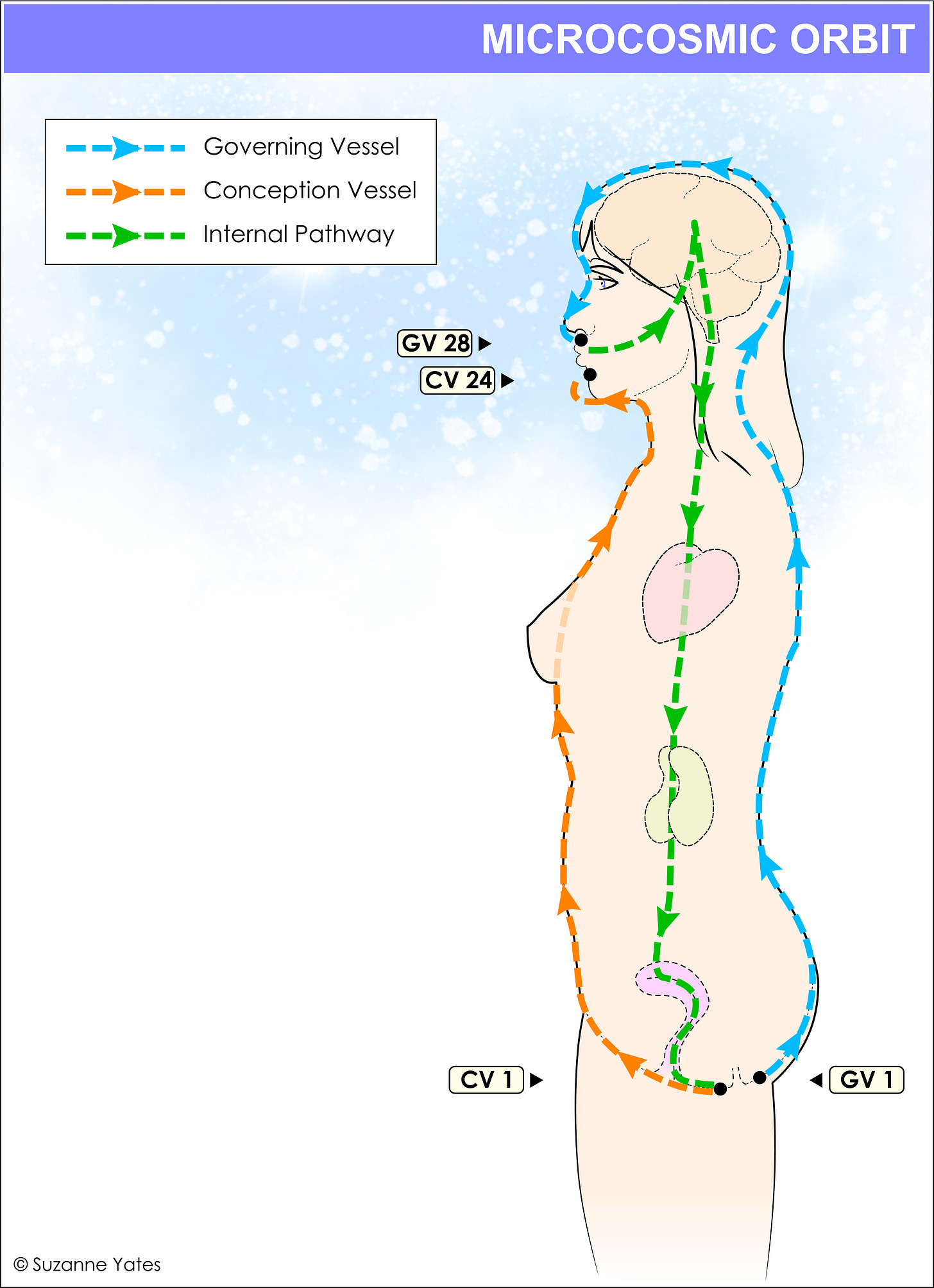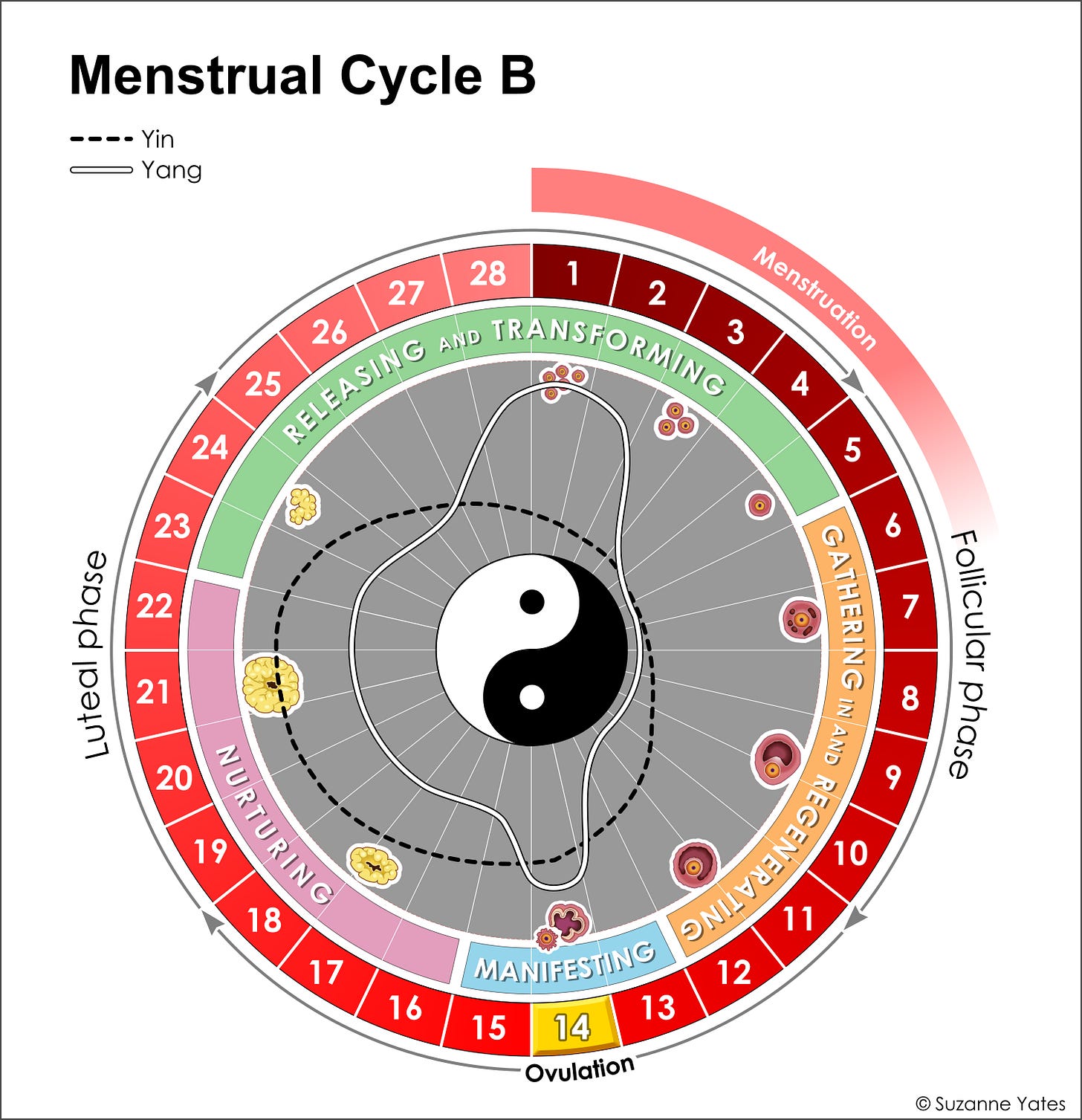a blue print for all life cycles, for men as well and women
This blog is in three parts. In this first part, I look at the way I see the cycle and how it is relevant to understand the different phases, not only for women at all stages of their lives, but also for men.. It can also be helpful for pre-pubescents, to understand the changes which are going on in their bodies. In the second part I will look at the first two phases of the cycle and in the third part the last two phases.
I would love to hear what you think about my ideas and please ask me to explain anything which either doesn’t make sense or you disagree with!
You might think that the menstrual cycle is only relevant for women during a certain time of their life. Yet I find it a wonderful tool to understand different expressions of ourselves at any time, whether we are male or female.
I see the different phases as expressing broader qualities accessible to anyone:
· releasing and transforming (late luteal and menstruation),
· gathering in and regenerating (follicular phase),
· manifesting (ovulation)
· nurturing (first half of luteal).
These are unique expressions of our creativity in its broadest sense, not only linked with having children. However, each phase also prepares a woman for pregnancy, birth and postnatally, as well as the changes of the menopause. If we understand what is happening physiologically and energetically ( I will use my understanding of Chinese medicine here) then we are better able to connect with their power.
I have created some videos about the menstrual cycle too which you can view on my YouTube channel

I have developed some affirmations you can use
Gifts
I connect with my creative potential in its many expressions.
I am able to find my unique expression of creativity.
Challenge
Can I move beyond any limitations of my ancestors or culture?
The Extraordinary Vessels of Chinese medicine
I refer to the Extraordinary Vessels of Chinese medicine. These are energetic pathways in the body, like the better known 12 channels, but they circulate more fundamental energies. They exist before we take on our physical form and all form, including the 12 channels, emerges from them.
The Vessels circulate our energetic DNA – our body’s blueprint for life and our connection to our ancestors. This is known as our Essence and flows in 7-year cycles for women and 8-year cycles for men. It is closely linked with our neuroendocrine (hormonal) system.
I have a YouTube video which introduces them.
Main qualities of each phase of the cycle
Look at this chart to see how the phase is linked to other times in our life. I also show how they might be related to the seasons and the earth as well as, if you know them, specific Extraordinary Vessels.

The ”28” day lunar cycle –how does it affect you?
The average cycle is 28 days – although most women don’t have a 28 day cycle for all their reproductive years. Our cycle changes during our life different phases, puberty, peak fertility, after having children or not and pre menopause. Its monthly changes tell us a lot about ourselves and are a good way to measure our well-being. Variation is part of our cycle.
28 days is a lunar cycle. Both men and women may notice changes in how they feel, depending on the moon phase. Of course this is easier if you live in the countryside.
In my charts, I have kept the 28 day cycle but bear in mind it is only a guide.
Modern science divides the cycle into 2 phases: follicular and luteal. The first day is the beginning of menstruation.

Hormonal changes for men as well as women
This first chart shows the main physiological changes, changes in the lining of the womb and in the maturation of the egg and corpus lutuem, including hormonal changes. The biomedical model of health gives a lot of weight to how hormonal changes affect us, but they are only part of the picture, and each woman responds differently to them. I feel that each hormone’s action tends to be oversimplified. Hormones are a complex system, interacting with each other and with other systems in the body.
For men and women, GnRH is released in our brain from our hypothalamus (master switchboard) and acts on our pituitary gland (master gland) which releases follicle stimulating hormone (FSH) and luteinising hormone (LH). These cause the testes to release testosterone and the ovaries to release oestrogen and progesterone.
The maturation and decline of the egg (if unfertilised) is regulated mainly by FSH and LH. The response of a woman’s body is regulated mainly by oestrogen (oestradiol) and progesterone. Testosterone levels peak at the end of the second week and drop as progesterone levels rise. Prolactin rises along with oestrogen, is highest at ovulation and then declines. Any imbalance in these hormones, or the glands which produce them, affects the cycle.
The ancient Chinese understood these hormonal (neuroendocrine) changes as expressions of the Extraordinary Vessels. These Vessels connect our Brain and Reproductive organs (Palaces) with our Heart and Kidneys (including adrenals). They considered Menstrual Blood to be different from other Blood because it is an expression of the cycles of our Palaces and our Essence.

But hormones are only part of the picture
Both the ancient Chinese and modern medicine recognise that the cycle is influenced by stress, nutrition and our environment. Stress raises our cortisol levels which affects our hormonal balance. Sugar/carbohydrates in our diet affect our insulin levels. Insulin regulates better when oestrogen is higher (follicular phase) than progesterone (luteal). Environmental influences include lifestyle, diet and relationships. These can be supportive if we take care of ourselves and nourish ourselves with good relationships or toxic if we are in difficult life situations and living in polluted surroundings.
Exploring each phase of the cycle and its qualities
If you look at the chart below, you will see that I have divided the 4 phases up slightly differently than usual. Under “Menstruation” I include the last few days of the luteal phase when the corpus luteum degenerates because it is this which initiates menstruation.

The menstrual cycle expresses cyclical movements of Yin and Yang, which are marked on the chart. Yin is a more inward, resting movement (night) and Yang a more outward dynamic movement (day).
Next, I will look at each of these phases in more detail, but before that, I would love to hear your thoughts!


